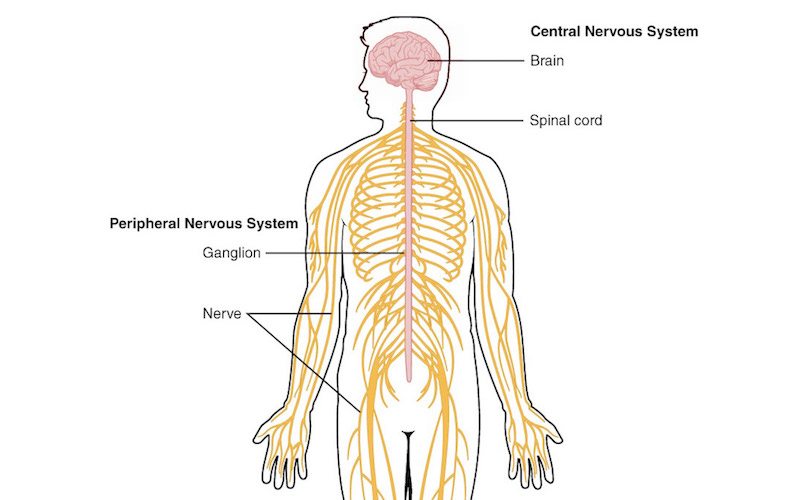Nervous system
Episode #3 of the course “How the human body works”
Nerves are long, fibrous bunches of cells that basically operate as the body’s electrical wiring. They transmit electronic information from one body part to another, helping muscles move when we want to chase a ball, allowing sweat to bead when we get too hot, and making sure our favorite dessert tastes as good as we remember it.
The nervous system is classified in two parts: the central nervous system (CNS) and the peripheral nervous system. The CNS is comprised of the brain, spinal cord, and central nerves, and the peripheral nervous system is made of smaller interconnecting nerves and neurons. All the nerves in the nervous system relay two kinds of information: automatic (that is, unconscious) information, called “autonomic,” and conscious information related to sensory stimuli and motor movement. The CNS itself is autonomic, sending signals to organs and peripheral nerves throughout the body without conscious effort. If a central nerve or the spinal cord is severed, the body’s messaging system breaks down, and it may never recover fully.
Every time you feel an itch, wiggle your toe, or taste water, your peripheral nerves are sending and receiving signals. They are so efficient, it takes only a fraction of a millisecond for your brain to respond and send a message back. That’s why you remove your hand from a hot stove so quickly—“before you’ve had time to think about it,” as the expression goes.
Because nerves have gaps (called synapses) between them at each end, they have to rely on chemicals to send the message to the next nerve cell. When a nerve receives a signal, it releases a chemical called a neurotransmitter, which tells other nerve cells what to do and helps them pass the signal along. Doctors use the chemistry of neurotransmitters to treat diseases, causing nerves to send more or fewer signals depending on what the patient needs. Nerves are also sensitive to electrical stimulation, which medical professionals use to signal nerves to release muscle tension or to strengthen an autonomic function.
Share with friends

